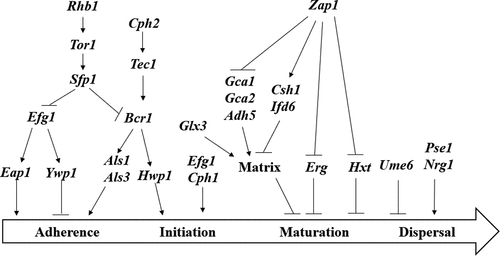Figures & data
Figure 1. Four steps of C. albicans biofilm development. In the adherence step, yeast-form cells adhere to the substrate. In the initiation step, cells form microcolonies and hyphae begin to form. In the maturation step, the biofilm biomass expands. In the dispersal step, yeast-form cells are released to surrounding environment.


